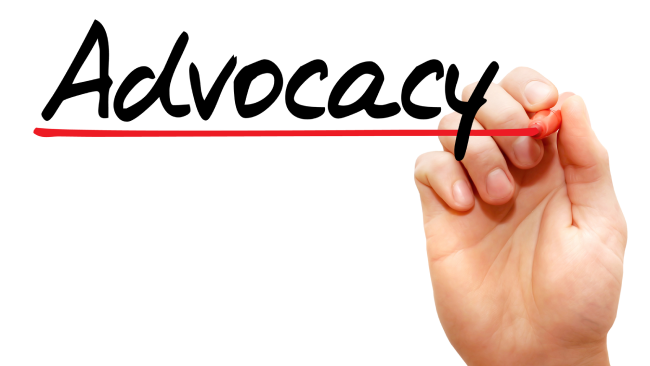Introduction:
In today’s fast-paced business environment, the ability to manage project dependencies effectively is a critical skill for leaders and project managers alike. As organizations strive to deliver value swiftly and efficiently, the interconnectedness of tasks and resources becomes increasingly complex. Dependencies not only influence project timelines but also significantly impact overall success and team dynamics. Understanding how to identify, analyze, and navigate these dependencies is essential for minimizing risks and maximizing productivity. This article explores effective strategies for managing project dependencies, providing professionals with the tools and insights needed to streamline workflows, enhance collaboration, and ensure that projects are delivered on time and within scope. By adopting these strategies, organizations can foster a culture of proactive management, turning potential challenges into opportunities for growth and innovation.
Table of Contents
- Identifying and Mapping Project Dependencies for Enhanced Clarity
- Establishing Clear Communication Channels to Mitigate Risks
- Implementing Agile Methodologies for Adaptive Dependency Management
- Leveraging Technology Tools to Optimize Dependency Tracking and Reporting
- Final Thoughts
Identifying and Mapping Project Dependencies for Enhanced Clarity
In the complex landscape of project management, pinpointing and detailing dependencies helps teams gain a clearer understanding of task interrelations. This process involves identifying which tasks are reliant on one another for their successful execution. By doing so, project managers can prioritize work more effectively, allocate resources wisely, and reduce the risk of bottlenecks. To facilitate this, visual tools such as dependency mapping can serve as powerful assets. Utilizing diagrams, Gantt charts, or even simple tables can help in visualizing relationships among tasks. Below are key elements to consider when mapping dependencies:
- Task Identification: Clearly define each task involved in the project.
- Dependency Types: Determine the types of dependencies, such as finish-to-start, start-to-start, or finish-to-finish.
- Impact Analysis: Assess how delays in one task affect the overall project timeline.
- Communication Channels: Establish clear lines of communication to regularly update the team on any changes.
Furthermore, using a structured table to document these dependencies can reinforce clarity and organization. A practical approach is to create a table that highlights the following attributes of each task and their dependencies:
| Task | Dependent On | Dependency Type | Impact Level |
|---|---|---|---|
| Design Phase | Requirements Gathering | Finish-to-Start | High |
| Development | Design Phase | Finish-to-Start | Critical |
| Testing | Development | Start-to-Start | Medium |
Establishing Clear Communication Channels to Mitigate Risks
Clear communication channels are essential in managing project dependencies effectively, as they prevent misunderstandings and promote transparency among team members. Establishing these channels starts with defining the appropriate tools and methods by which the team will share information. Consider the following approaches:
- Regular Meetings: Schedule consistent check-ins to address progress and challenges.
- Collaboration Tools: Utilize platforms like Slack or Microsoft Teams for real-time communication.
- Documentation: Maintain up-to-date records of decisions and action items accessible to all stakeholders.
By fostering a culture of open dialogue, teams can better navigate the complexities associated with interdependent tasks. Implementing a structured communication plan can significantly improve risk management. Creating clear protocols can be summarized in the following table:
| Communication Method | Purpose |
|---|---|
| Daily Stand-ups | Quick updates on progress and roadblocks |
| Weekly Review Sessions | Deep dive into project timelines and dependencies |
| Email Updates | Formal communication for major changes or announcements |
Implementing Agile Methodologies for Adaptive Dependency Management
To effectively manage project dependencies, it is vital to embrace a flexible approach that allows teams to respond to changing requirements. Implementing agile methodologies facilitates adaptive dependency management by promoting regular communication and collaboration across teams. Key strategies include:
- Daily Stand-ups: Encourage teams to share updates on dependencies, helping identify potential blockers quickly.
- Cross-Functional Teams: Foster collaboration with team members from different functions to understand and manage dependencies holistically.
- Visual Management Tools: Utilize boards or charts to visualize dependencies, making them more manageable and transparent for all stakeholders.
Moreover, agile practices such as iterative development and incremental delivery help in breaking down complex dependencies into manageable parts. This can be supported through the use of planning tools and techniques like:
| Technique | Description |
|---|---|
| Dependency Mapping | Identify and visualize dependencies between tasks to prioritize them effectively. |
| Backlog Grooming | Regularly review the backlog to reassess and reprioritize dependencies as needed. |
| Retrospectives | Conduct regular reviews to reflect on dependency challenges and continuously improve processes. |
Leveraging Technology Tools to Optimize Dependency Tracking and Reporting
In today’s dynamic project environment, utilizing technology tools can significantly enhance dependency tracking and reporting, providing project managers with actionable insights and clarity. By integrating advanced software solutions, teams can automate the process of identifying, monitoring, and reporting dependencies across projects. Key benefits include:
- Real-time visibility: Monitor dependencies as they evolve, allowing for proactive management.
- Centralized documentation: Maintain all dependency-related information in one accessible location.
- Automated alerts: Receive notifications for potential risks and impacts associated with dependencies.
Moreover, leveraging collaborative platforms can foster better communication among stakeholders involved in the project lifecycle. These tools often come with integrated dashboards that streamline visualization of dependencies, making it easier to assess the impact of changes in real-time. By using features such as:
- Interactive Gantt charts: Visualize project timelines alongside dependencies.
- Reporting functionalities: Generate detailed reports to highlight critical paths and associated risks.
- Integrations with existing systems: Seamlessly connect to other project management tools for a holistic view.
Final Thoughts
effectively managing project dependencies is crucial for the successful delivery of any project. By implementing the strategies discussed—such as establishing clear communication channels, utilizing project management tools, prioritizing tasks, and fostering a collaborative team environment—organizations can significantly enhance their ability to navigate the complexities of interdependent tasks. Remember, the key to efficient project management lies in proactive planning and continuous monitoring. As you refine your approach to managing dependencies, you’ll not only improve project outcomes but will also cultivate a culture of accountability and resilience within your team. By prioritizing these strategies, your organization can better align resources, mitigate risks, and ultimately achieve greater project success. Embrace these best practices to ensure that your projects not only meet deadlines but also exceed expectations, driving sustained growth and innovation in your business.






